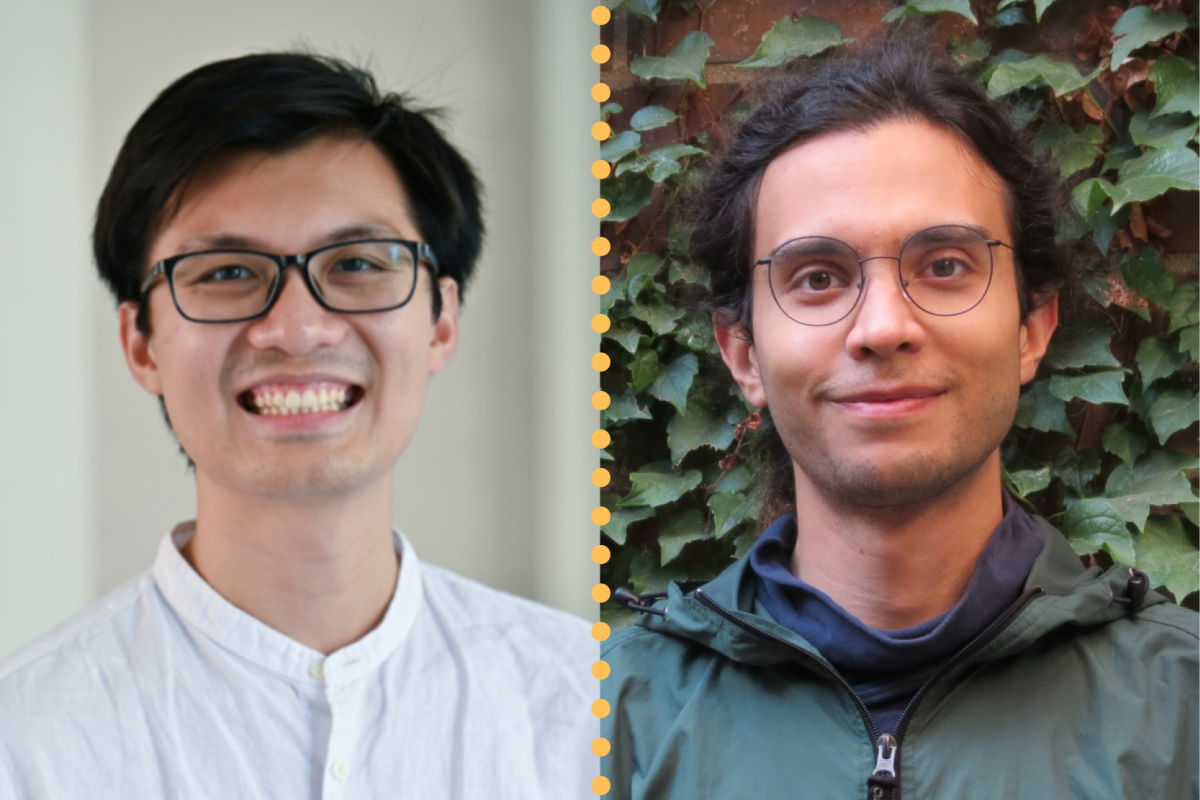Anh Trong Nam Hoang and Mahrud Sayrafi awarded Doctoral Dissertation Fellowships

MINNEAPOLIS/ST. PAUL (9/8/2023) – Anh Trong Nam Hoang and Mahrud Sayrafi have each been awarded a Doctoral Dissertation Fellowship (DDF) for the 2023-24 academic year. Both students are expected to graduate in 2024, after their fellowship year.
Anh Trong Nam Hoang came to the University of Minnesota in 2018 after completing his undergraduate studies in mathematics and physics at Lawrence University. He is advised by Professor Craig Westerland. Hoang’s research interests lie at the interface between algebraic topology, the study of shapes and spaces using algebraic techniques, and arithmetic statistics, the study of distributional questions in number theory.
“The central subject of my research is the braid groups, a mathematical version of the colloquial pattern with the same name that is prevalent in a broad range of mathematics such as low-dimensional topology, representation theory, and algebraic combinatorics. My research relies on connections between braid groups, topological spaces called configuration spaces, and arithmetic geometry to study the asymptotic behavior of fundamental quantities in number theory,” he says about his research.
During his time at UMN, Hoang has been an organizer/co-organizer for the UMN Student Topology and Geometry Seminar since 2020, and a co-organizer for the UMN Topology Seminar since 2022. He was also a TA for the 2022 UMN Combinatorics and Algebra REU, and a Directed Reading Program mentor for several undergraduates.
Upon graduation, Hoang’s goal is to land a postdoctoral position starting in Fall 2024, which he hopes will lay the first cornerstone of a future academic career in research mathematics.
Mahrud Sayrafi started his academic journey at a community college in California and graduated from University of California, Berkeley in 2017. He joined the UMN doctoral program in 2018.
At UMN, Sayrafi is advised by Christine Berkesch. Broadly speaking, the focus of his research is the geometry of syzygies on a toric variety and its implications in derived and birational geometry.
“Here is what that means: there's an algebro-geometric dictionary that translates projective geometry (think perspective technique in paintings and sketches of Renaissance era artists and architects) into homogeneous equations like wx+yz and x2y+xyz+yz2 in a standard graded polynomial ring. The overarching goal of the research programme that I'm involved in concerns generalizing this dictionary to the multigraded setting, where x2w+yz is homogeneous if deg(x) = deg(y) = (1,0) and deg(z) = (0,1) and deg(w) = (-1,1). I work on using algebraic techniques like syzygies to better understand the geometric side, which is where toric varieties live,” he says about his research.
As one of the founders of the Directed Reading Program (DRP) at UMN in 2018, Sayrafi has been focused on working with and growing that program for the past five years. He says he has also enjoyed being a member of the Vincent Thespians, and for the past two years, he has helped organize two math workshops in Minneapolis. The first was focused on connecting graduate students in combinatorial commutative algebra last year (GradMoCCA), and the second was a Macaulay2 mini-school and workshop this June.
As he wraps up the final year of his PhD program, Sayrafi says he is working on applications for postdoctoral positions. “I'm [also] hoping to make sure that the DRP continues running, and to better balance my time for sustaining research collaborations,” he says.
The Doctoral Dissertation Fellowship gives UMN’s most accomplished PhD candidates an opportunity to devote full-time effort to their research by providing time to finalize and write their dissertation during the fellowship year. The distinguished award offers a $25,000 stipend, academic year tuition, and a $1,000 conference grant.